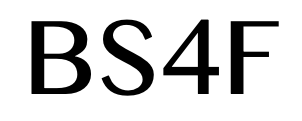The luxury and fashion industries have long danced on a tightrope stretched across borders, powered by globalization, cross-cultural consumption, and intricate supply chains. But that balance has shattered.
President Trump’s so-called ‘Liberation Day’ tariffs — an escalation in economic protectionism — have jolted the fashion world into a new, uncertain era. At the center of the storm is a 104% tariff spike on Chinese imports, reciprocal measures from the EU and China, and widespread confusion. While this administration postures around negotiation, no nation has yet bartered its way to zero. For now, fashion — already bruised from recent economic slowdowns — is forced to brace for impact.

Let’s be clear: these tariffs are not just policy shifts. They are threats, especially to US fashion companies and the European luxury houses for whom the American consumer has been a lifeline. Stock prices are tumbling from LVMH and Richemont to Nike and Ralph Lauren. The S&P 500 fell 1.7% the day the tariffs took effect, with the Dow and Nasdaq also nosediving. If investor sentiment is any indication, the fallout has only begun.
Coming into 2025, there was cautious optimism. After a sluggish 2024 — marred by China’s ongoing economic slowdown and softening US demand — analysts predicted a modest 5% rebound in the luxury sector. That now looks hopelessly naive. HSBC and Euromonitor have already forecasted that global luxury sales could shrink by 2% this year.
This presents a dilemma for luxury players. A $300 hike on a $5,000 bag may not matter to the ultra-wealthy — yet even this demographic, analysts warn, watches the market closely. When portfolios shrink, so does consumer confidence. “Even ultra-high-net-worth individuals often gauge their wealth based on stock market performance,” says Claudia D’Arpizio, senior partner at Bain & Co.
Interestingly, the brands best positioned to weather this storm are the very ones long criticized for unsustainable practices: fast fashion juggernauts like Shein and Temu. Their ultra-low prices remain attractive. But middle-market brands, which lack luxury’s price elasticity and fast fashion’s affordability, are caught in the crossfire. These companies face a grim reality: double-digit tariffs on goods from Bangladesh, Vietnam, and Cambodia — crucial sourcing hubs — have introduced significant cost pressures. These companies face the dilemma of absorbing increased costs or passing them on to consumers, potentially leading to an estimated 15% price hike per item.
Retailers are scrambling. Some are renegotiating supplier contracts, others trimming internal costs. Some, like Levi’s, have task forces exploring surgical price hikes. Others are repricing inventory already on sales floors. The most adaptive are investing in dynamic pricing tech, ensuring they can shift strategies as negotiations — or retaliations — evolve.
And let’s not forget the consumer’s new headache: shock delivery charges. Social media is now awash with posts from Americans blindsided by unexpected fees — $458 for a PR package, $2,600 for a parcel from Canada, $345 for a Ssense order. These aren’t isolated incidents. UPS, USPS, DHL and FedEx now regularly pass import taxes directly to the customer, leading to denied deliveries, returned packages, and frayed brand loyalty.
Amid the chaos, some see opportunity. Deborah Weinswig of Coresight Research believes this moment could become fashion’s “realignment reckoning.” The pandemic was supposed to do that — streamline supply chains, enhance transparency, reinvest in purpose. Instead, it revealed the industry’s deep inertia. Tariffs may finally force action.
Brands are pivoting toward storytelling. In a world of rising prices, ‘why’ matters more than ever. Consumers need justification to keep buying — not just in quality, but in meaning. That means a return to craftsmanship, heritage, and value narratives. As Jhara Valentini puts it, “Brand purpose will act as the safety net.”
And perhaps that’s a silver lining: the resurgence of brand identity as more than just a marketing ploy. Faced with deglobalization, some brands are turning inward — investing in “luxury localism,” where domestic production becomes a badge of authenticity, and national pride finds expression through artisanal goods.
But optimism can’t paper over the very real economic threat. If tariffs persist, a US recession is not just likely — it’s expected. That would devastate the fashion and luxury sectors, both of which are already facing volume declines due to inflation-fatigued middle-class consumers. If the American shopper checks out, luxury’s recovery may collapse entirely.
The reality is: this isn’t sustainable. Not for brands, not for suppliers, not for consumers. And as always, it’s the most vulnerable companies — the ones that operate on tight margins, that overextended in better times — who will be the first to fall. But even the giants are not invincible. As one analyst warned, “If retailers were already teetering at the edge, they are a lot more concerned right now.”
Some hope remains. The Trump administration claims 70 countries are looking to negotiate. If history is any guide, these measures — like many of Trump’s policies — could be volatile, performative, and ultimately temporary. But the longer this chaos lasts, the deeper the scars it leaves on an industry already balancing on a knife’s edge.
In the end, this is about more than tariffs. It’s about whether fashion can adapt fast enough to a world that no longer plays by the rules it was built on. The next few months will determine whether this is a necessary reset or a luxury sector unraveling in real time.
By Anna Mazzallon
Sources:
https://edition.cnn.com/2025/04/03/style/what-trumps-tariffs-mean-for-fashion-bof/index.html






